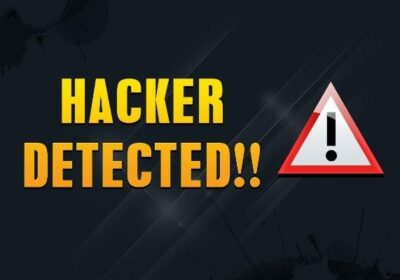In our interconnected world, the phrase “online identity” carries profound significance. For many, it’s not just about a social media profile or an email address; it encapsulates a larger digital footprint, encompassing personal details, shopping habits, financial data, and more. Protecting this identity has never been more paramount. In this blog post, we’ll delve into the essentials of cybersecurity to safeguard your online persona.
1. Understand the Threat Landscape
To protect yourself, you must first understand the threats. Cyberattacks come in various forms:
- Phishing Attacks: Deceptive emails or messages designed to trick you into providing personal information.
- Malware: Software specifically crafted to harm or exploit devices.
- Man-in-the-Middle Attacks: Unauthorized interception of communication between two parties.
- DDoS Attacks: Overwhelming a system with traffic, causing it to crash.
- Ransomware: Malicious software that encrypts a victim’s files, then demands payment to decrypt them.
2. Use Strong, Unique Passwords
Arguably the most foundational step in cybersecurity is ensuring that your passwords are robust and unique for each account. Tools like password managers can generate and store these for you. By avoiding repeated or simple passwords, you significantly reduce the chances of unauthorized access.
3. Two-Factor Authentication (2FA)
2FA provides an added layer of security by requiring two types of identification. It’s not just about what you know (password) but also what you have (a code sent to your phone or biometric data like fingerprints). This makes breaching your account exponentially more challenging.
4. Keep Software Updated
Outdated software can become a breeding ground for cyberattacks. Regularly updating your operating system, apps, and software ensures that you’re protected with the latest security patches.
5. Beware of Phishing Scams
Always double-check URLs, especially if you’ve followed a link from an email or message. Phishers often replicate popular sites, trying to trick you into entering your credentials.
6. Secure Your Wi-Fi Network
Your home Wi-Fi can be a vulnerability point and can be used to hack cell phone connected to your wifi network. Ensure it’s secured with a strong password and uses advanced encryption (like WPA3). Regularly update your router firmware and change default login credentials.
7. Regular Backups
Regularly backup your data either to an external drive or a cloud service. In the event of a ransomware attack, having backups can save you from paying a ransom or losing essential data.
8. Be Cautious of Public Wi-Fi
Public Wi-Fi networks can be easy targets for hackers. If you have to use one, avoid accessing personal or sensitive data. Consider using a Virtual Private Network (VPN) to encrypt your online activity.
9. Educate Yourself
Stay updated on the latest cybersecurity threats and trends. The digital landscape evolves, and so do the threats. Awareness can be your first line of defense.
10. Use Antivirus and Anti-malware Software
Having reliable antivirus and anti-malware software can act as gatekeepers, scanning for, detecting, and removing threats before they can do harm.
11. Review Privacy Settings
Regularly review the privacy settings of your online accounts, especially on social media. Limit the amount of personal information you share and be wary of seemingly innocent quizzes or games that request access to your data.
Conclusion
In the digital age, our online identity is an extension of ourselves. Protecting it isn’t just a technical necessity but a crucial step in safeguarding our personal and financial well-being. By following these cybersecurity essentials, you can navigate the digital realm with greater confidence and security.




In addition to the cybersecurity essentials mentioned in the article, here are a few more tips to help protect your online identity:
Be mindful of what information you share online, even on personal social media accounts. Avoid sharing personal details such as your home address, phone number, or date of birth.
Be careful about clicking on links in emails or messages, even if they appear to be from someone you know. Phishing scams are becoming increasingly sophisticated, so it’s important to be vigilant.
Be aware of the latest cybersecurity threats and scams. There are many resources available online and from government agencies that can help you stay informed.
One of the most important things you can do to protect your online identity is to use strong, unique passwords for all of your accounts. A password manager can help you generate and store these passwords securely.
You should also enable two-factor authentication (2FA) on all of your accounts whenever possible. 2FA adds an extra layer of security by requiring you to enter a code from your phone in addition to your password when logging in.
Another important step in protecting your online identity is to keep your software up to date. Software updates often include security patches that can help protect you from known vulnerabilities.
You should also be careful about what software you install on your devices. Only download software from trusted sources and be sure to read the reviews before installing anything new.
Phishing scams are one of the most common types of cyberattacks. Phishing emails or messages are designed to trick you into revealing personal information, such as your passwords or credit card numbers.
To avoid phishing scams, be careful about clicking on links in emails or messages, even if they appear to be from someone you know. Hover over links to see the actual URL before clicking on them. If the URL doesn’t match the website it claims to be from, it’s probably a phishing attempt.
Your home Wi-Fi network is another potential entry point for hackers. Make sure your Wi-Fi network is secured with a strong password and uses advanced encryption (such as WPA3). You should also regularly update your router firmware and change the default login credentials.
If you’re using public Wi-Fi, be careful about accessing personal or sensitive data. Consider using a virtual private network (VPN) to encrypt your online activity.
Regularly backing up your data is another important step in protecting your online identity. In the event of a cyberattack, having backups can help you recover your data without having to pay a ransom.
You can back up your data to an external hard drive, a cloud storage service, or both. It’s a good idea to create a backup schedule and stick to it.
Educating yourself about cybersecurity is one of the best ways to protect your online identity. The more you know about the latest threats and scams, the better equipped you’ll be to defend yourself.
There are many resources available online and from government agencies that can help you learn about cybersecurity. You can also find helpful tips and advice from security experts on social media and other platforms.
Antivirus and anti-malware software can help protect your devices from malware and other cyber threats. Be sure to install and regularly update your antivirus and anti-malware software.
You should also run regular scans for malware on your devices. This will help to detect and remove any malware that may have infected your system.
Reviewing your privacy settings is another important step in protecting your online identity. Many social media platforms and other websites have privacy settings that allow you to control how your information is shared.
Take some time to review your privacy settings and make sure they’re configured to your liking. Be careful about sharing personal information online and be wary of seemingly innocent quizzes or games that request access to your data.
By following these cybersecurity essentials, you can help protect your online identity and reduce your risk of becoming a victim of a cyberattack. It’s important to remember that cybersecurity is an ongoing process, so be sure to stay informed about the latest threats and scams, and regularly update your security measures.